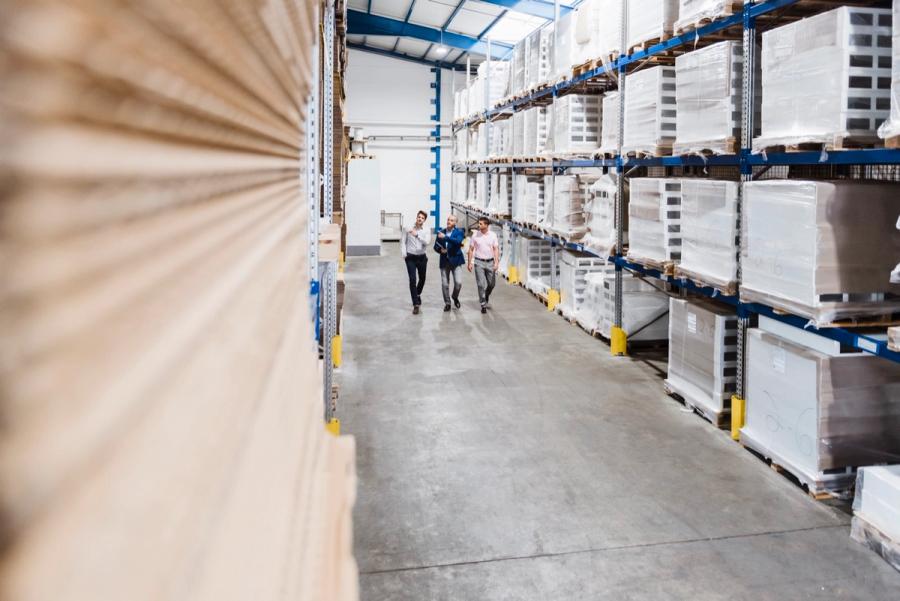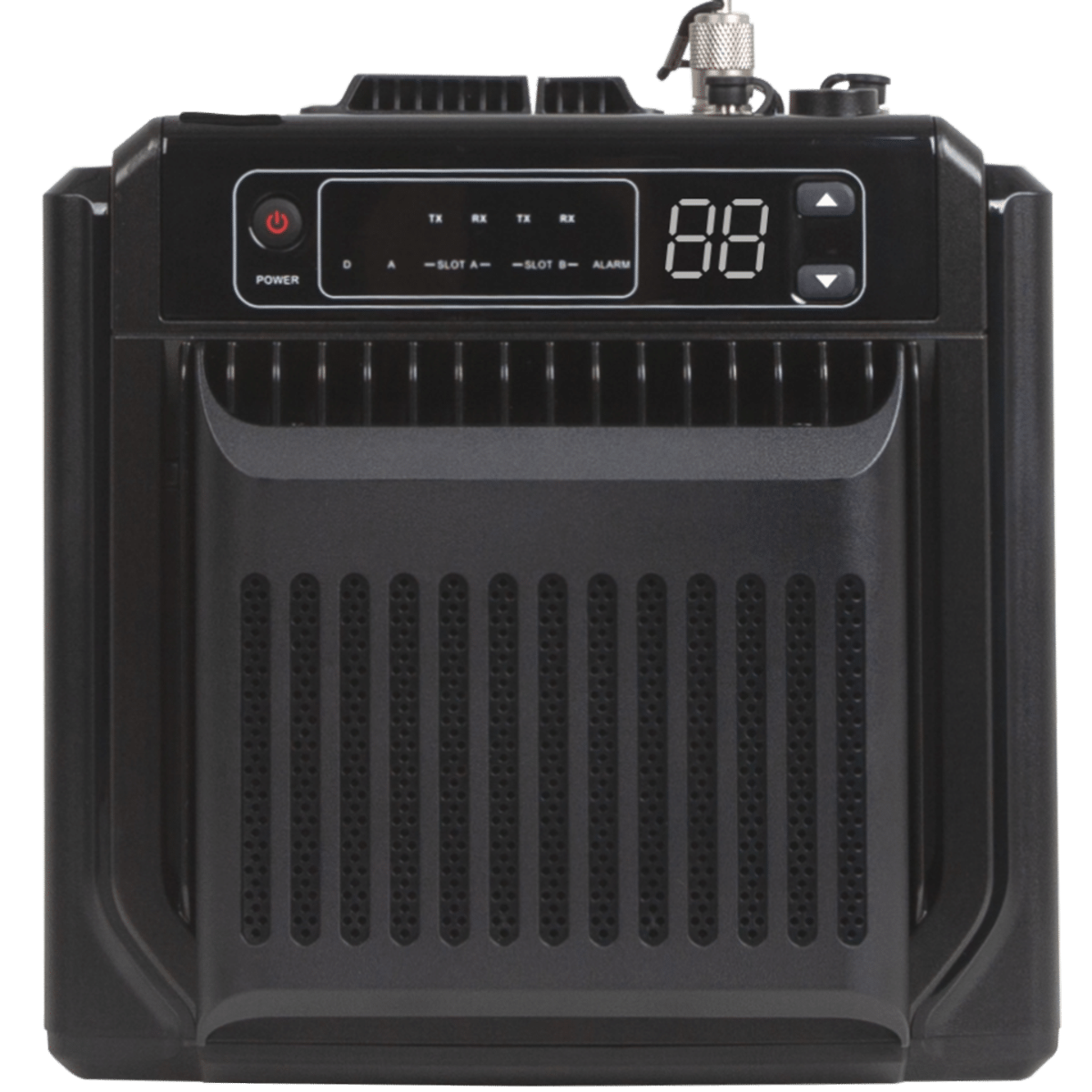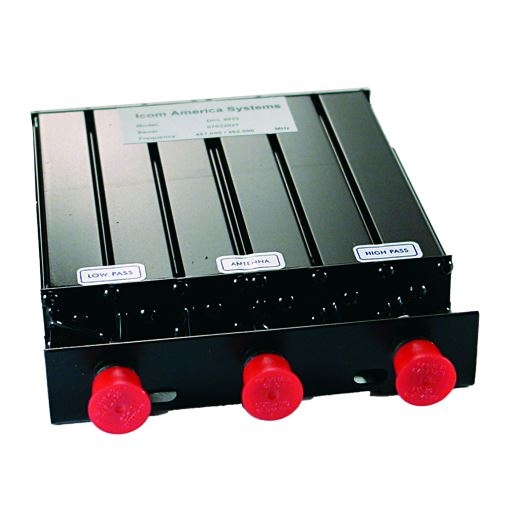
Manufacturing and Warehouse Operations: Optimizing Communication with Two-Way Radios
On this page
- Why radios are the right tool for the floor
- Common floor problems radios fix (with examples)
- Coverage fundamentals in racking and machinery
- Analog or digital (DMR/NXDN) for manufacturing & warehousing?
- A simple, scalable talkpath plan
- Accessories that supercharge intelligibility (and compliance)
- Programming that prevents 90% of “radio problems”
- Interference and noise: real-world mitigation
- Safety and compliance (and how radios help)
- Rollout playbook you can use this quarter
- KPIs radios can directly improve
- Troubleshooting on a live floor
- Training that sticks (and takes under 10 minutes)
- Maintenance rhythm that keeps systems reliable
In fast-moving factories and warehouses, time is money—and safety. Orders change mid-shift, forklifts share aisles with foot traffic, and equipment noise competes with critical instructions. When messages don’t get through the first time, you get mispicks, missed trucks, downtime, and risks to people and product. Two-way radios solve these problems by delivering instant, one-to-many voice that doesn’t depend on public networks. With the right system design, channel plan, and training, radios become the nervous system of your operation—keeping production, maintenance, shipping, and safety in sync.
This guide shows manufacturers and DCs how to deploy radios that cut errors, speed handoffs, and strengthen safety—without overcomplicating the tech.
Why radios are the right tool for the floor
Phones and apps are great for individual messaging. Warehouses and plants need instant group voice:
- Push-to-talk speed. One button connects the right team in under a second—no dialing, ringing, or app loading.
- Works through congestion. Radios operate peer-to-peer or via an on-site repeater; they keep working through Wi-Fi dead spots, mesh outages, or cellular congestion.
- One-to-many clarity. Shipping, receiving, maintenance, and supervisors hear the same instruction at the same moment.
- Rugged and simple. Built for dust, temperature swings, and loud environments; glove-friendly controls and loud, tuned speakers.
Common floor problems radios fix (with examples)
- Mispicks and rework. A supervisor calls “Hold pick on Lane 12; item re-slotted,” and the message reaches the whole picking zone—now, not after a notification delay.
- Dock chaos. Gate assignments and last-minute trailer swaps are broadcast site-wide so the right dock is staffed before the truck hits the door.
- Equipment downtime. Operators use a maintenance talkpath to call for help the moment a line trips; parts runners get there faster with clear directions.
- Safety calls in noise. Remote speaker mics and noise-reducing headsets keep instructions intelligible next to conveyors, compressors, and stretch-wrap machines.
- Inventory moves. Put-away teams coordinate pallet stack heights and aisle routing without tying up a general channel.
Coverage fundamentals in racking and machinery
Warehouses and plants are RF-unfriendly: long metal aisles, mezzanines, coolers/freezers, welders, VFDs, and thick walls. Engineer for height, band, and pattern before you think about more watts.
Band choice that fits your building
- UHF usually wins indoors. It penetrates racking, walls, and machinery better and supports short, efficient portable antennas.
- VHF can be efficient outdoors or across large yards with line of sight, but it’s less ideal deep inside dense storage.
If you’re unsure, walk-test both for 30–60 minutes with borrowed or rental units.
Height beats watts
A rooftop or penthouse antenna mounted just above parapets and HVAC clutter often fixes “dead aisles” without raising transmit power. Use low-loss coax and weatherproof every connector.
Surgical fixes for stubborn areas
- Distributed Antenna System (DAS): Ceiling antennas and splitters that spread RF across long aisles or mezzanines.
- Leaky feeder cable: Radiating cable along stairwells, tunnels, or long, enclosed corridors.
- Freezer rooms and coolers: Penetrations and doors eat signal—plan a nearby ceiling antenna or an interior drop.
Analog or digital (DMR/NXDN) for manufacturing & warehousing?
Analog FM is simple and cost-effective for small crews and light concurrency. Digital (most commonly DMR in business fleets) adds value when operations are busy:
- Two time slots on one repeater channel (DMR)—double the talk capacity without more spectrum.
- Cleaner audio at low signal, which keeps words intelligible deeper into aisles and around corners.
- Talkgroups that mirror departments (Picking, Packing, Shipping, Maintenance, Safety) without creating channel sprawl.
- Unit IDs, emergency/man-down, text, GPS options (helpful for dispatch and audits).
- Encryption, if your incident traffic or IP needs privacy.
If you often hear “please clear the channel” or calls get stepped on, DMR capacity is the fastest relief.
A simple, scalable talkpath plan
Keep it short and role-based. Name channels or talkgroups clearly so no one hesitates under pressure.
- SITE (site-wide): Time-critical updates (dock assignments, weather holds, line restarts).
- PICK (or ZONE A/B): Picking teams by zone or aisle set.
- PACK/SHIP: Packing lines, cartonization, labeling, and dock doors.
- RECEIVING: Gate, unloading, staging, and put-away coordination.
- MAINT: Maintenance techs and parts runners.
- QA/FOOD SAFETY (as needed): Quality checks and holds.
- SAFETY/EMS: Supervisors trained for first response; quiet unless needed.
- EMERGENCY: Monitored by command; stays clear until required.
If using DMR, map each department to a talkgroup; keep SITE and EMERGENCY as top priorities. Limit scan lists to home + SITE so users don’t miss syllables while the radio scans elsewhere.
Accessories that supercharge intelligibility (and compliance)
- Remote Speaker Microphones (RSMs): Clip at collar/strap height; keep mic 1–2 inches from mouth. Crucial in forklift aisles and pack lines.
- Noise-reducing headsets: For high-SPL areas (compressors, palletizers, glass lines). Ensure hearing protection ratings fit your safety program.
- Discreet earpieces: Supervisors and QA can hear clearly without broadcasting to the floor.
- Hard cases and belt clips: Keep antennas vertical and unconcealed for better RF.
- Multi-unit chargers: Place 6-bank chargers at break areas, shipping office, and maintenance shop.
- High-capacity batteries: Long shifts and overtime require spare packs; date-label every battery.
Programming that prevents 90% of “radio problems”
- Golden codeplug. One master configuration with consistent names and parameters—clone to every radio.
- Busy-Channel Lockout (BCL) & Time-Out Timer (TOT). Prevent stepping on active calls and stuck PTTs.
- DMR alignment. Match color code, time slot, and talkgroup exactly; keep RX group lists simple.
- Side-key mapping. Standardize Scan On/Off, Power Hi/Lo, and Emergency.
- Limit menus for non-admins. Reduce drift from accidental changes.
Interference and noise: real-world mitigation
- Electrical noise sources: VFDs, welders, LED drivers, and big motor starters raise the noise floor. Route feedline away from power risers; add ferrites to long control runs.
- Rooftop RF farms: If you share a roof with other services, protect repeaters with band-pass cavities/duplexers and keep jumpers short, dry, and tight.
- Metal aisles/multipath: Slightly raise or reposition the antenna to clear reflections down long racking runs; ceiling drops help in the worst aisles.
Safety and compliance (and how radios help)
- Incident response: A dedicated SAFETY or EMERGENCY talkpath with clear scripts (“Medical to Aisle 17, non-life-threatening cut”).
- Man-down/lone worker: Digital features can auto-alert command if a radio tilts or isn’t acknowledged.
- Plain language: Under stress, codes fail. Train short, clear phrases with location first.
- Intrinsically Safe (IS): If you handle flammables, powders, or explosive atmospheres, use IS-certified radios and accessories in those zones.
Rollout playbook you can use this quarter
- Map the footprint. Mark racking heights, coolers/freezers, mezzanines, maintenance shop, receiving, and docks. Note known dead aisles.
- Pick band and test. Start with UHF; walk-test for 30–60 minutes with borrowed gear.
- Decide analog or DMR. If you expect concurrent conversations across teams, DMR’s two time slots reduce congestion.
- Place the repeater antenna. High, central, and clear of metal clutter. Weatherproof connections; verify coverage.
- Define talkpaths. SITE, PICK/ZONE, PACK/SHIP, RECEIVING, MAINT, SAFETY, EMERGENCY. Keep names short.
- Standardize accessories. RSMs on loud roles; headsets where hearing protection is required; multi-bank chargers staged by department.
- Train in 10 minutes. Channel plan, PTT technique (press, pause one second, speak 1–2 inches from mic), SITE etiquette, emergency scripts.
- Run a five-minute drill. Dock swap, line hold/release, maintenance hot call. Confirm acknowledgments and routing.
- Audit weekly. Bent antennas, frayed RSM cords, battery health, programming drift.
- Document lessons. Update the codeplug and quick-reference card; keep a laminated copy at chargers.
KPIs radios can directly improve
- Dock turns / dwell time. Faster reassignment, clearer staging instructions.
- Lines-down minutes. Quicker maintenance dispatch with precise location calls.
- Picking accuracy. Instant “hold” or “slot change” alerts reduce mispicks.
- Safety response time. Shorter intervals from call to on-scene arrival.
- Overtime and rework. Fewer repeats and do-overs from missed messages.
Troubleshooting on a live floor
🎁
- “I hear nothing.” Confirm channel/talkgroup; on DMR, verify color code/time slot. Remove accessory and try the radio’s internal speaker.
- “Static/choppy.” Swap to a known-good battery; check antenna is tight and vertical; step to a clearer line of sight.
- “Stepped-on calls.” Move coordination off SITE; add a DMR slot for PACK/SHIP or MAINT if traffic is heavy.
- “Dead aisle.” Raise the antenna a few feet; add a ceiling drop near that run; avoid routing coax near VFD cabinets.
- “Range worse in a forklift.” Use an external quarter-wave antenna on the forklift canopy (where allowed) or reposition to line of sight before long transmissions.
Training that sticks (and takes under 10 minutes)
- How to hold it: Antenna vertical; RSM at collar height; speak across the mic to reduce wind pop.
- What to say: Who you are, where you are, what you need—ten seconds or less.
- What not to do: No stories on SITE; no open mics; no private chatter on EMERGENCY.
- Battery habits: Swap before the last bar; seat fully in chargers at breaks; keep a labeled spare.
Maintenance rhythm that keeps systems reliable
- Date-label every battery; replace on a 18–30 month cycle depending on duty.
- Quarterly inspections of antennas, RSM cords, and connectors; replace bent or cracked parts.
- Annual alignment of repeater power/deviation and duplexer health; re-weatherproof rooftop connections after any work.
- Programming discipline with a versioned codeplug and printed channel plan.
On this page
- Why radios are the right tool for the floor
- Common floor problems radios fix (with examples)
- Coverage fundamentals in racking and machinery
- Analog or digital (DMR/NXDN) for manufacturing & warehousing?
- A simple, scalable talkpath plan
- Accessories that supercharge intelligibility (and compliance)
- Programming that prevents 90% of “radio problems”
- Interference and noise: real-world mitigation
- Safety and compliance (and how radios help)
- Rollout playbook you can use this quarter
- KPIs radios can directly improve
- Troubleshooting on a live floor
- Training that sticks (and takes under 10 minutes)
- Maintenance rhythm that keeps systems reliable


